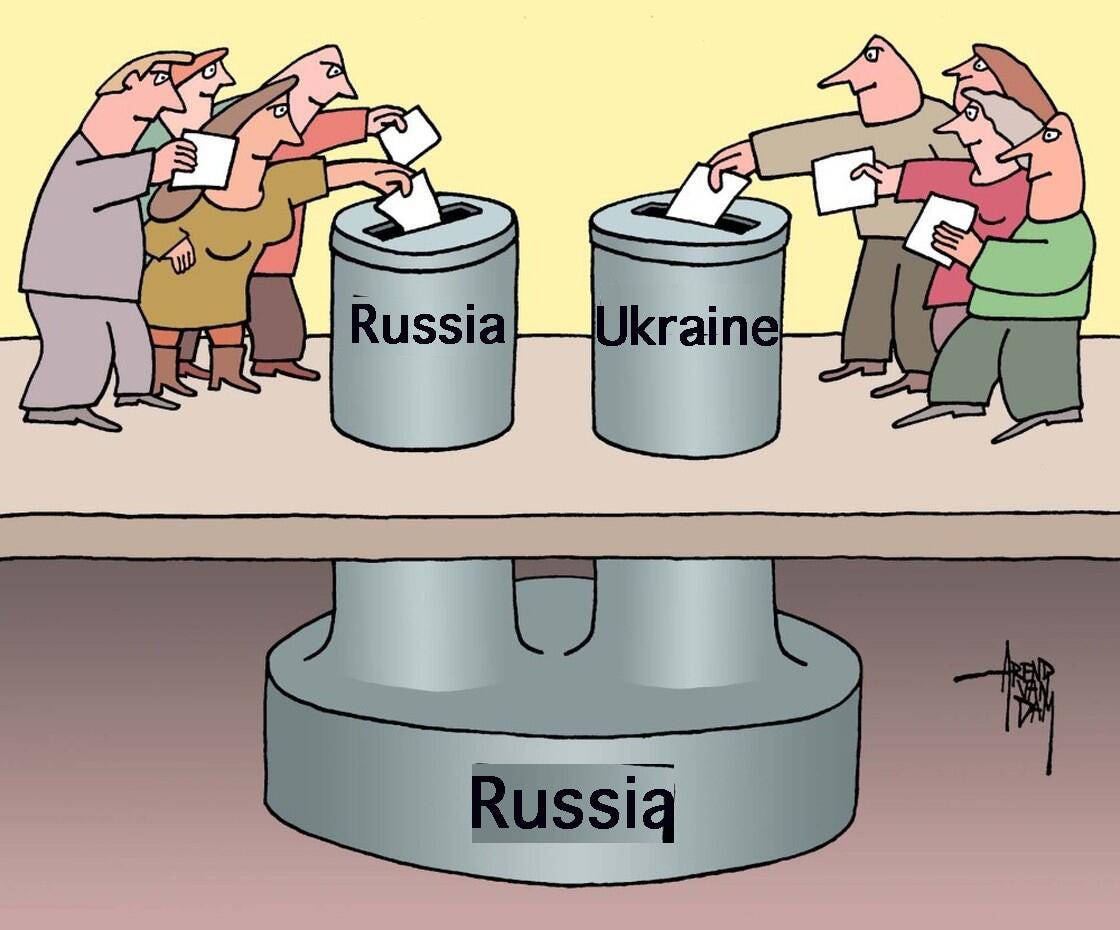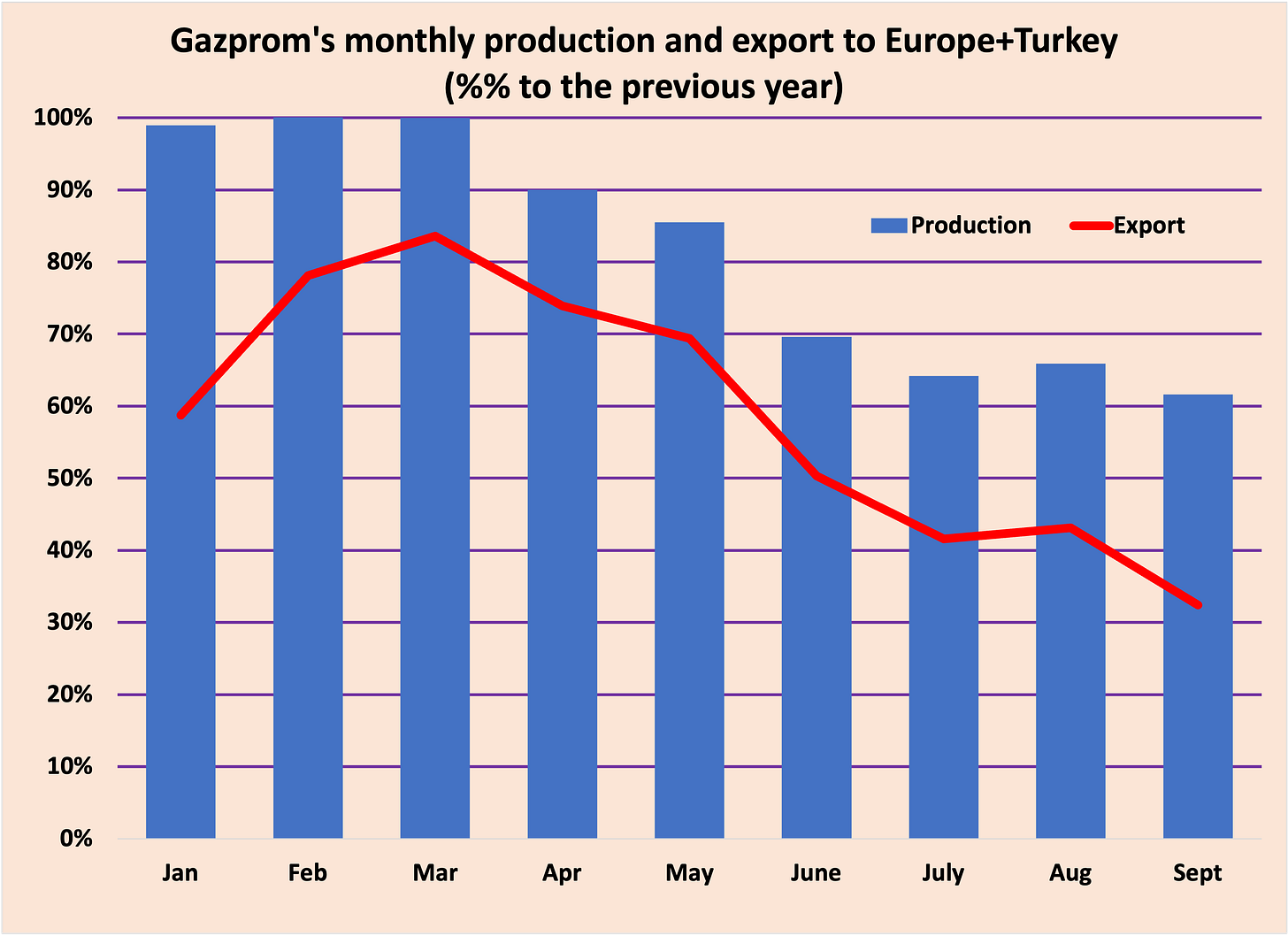October 3, 2022
Something has been annexed
Overcoming chaos
A new “gas” offensive
Just a fact
Alternative view
Dissatisfaction does not lead to changes
Affecting brains through the wallet
Something has been annexed
The Russian Constitutional Court ruled that the international treaties incorporating the Donetsk and Lugansk People’s Republics and the Zaporizhya and Kherson Regions into the Russian Federation were constitutional. According to Valery Zorkin, Chief Justice, the judges were guided primarily by fears for the lives of the local population.
The Constitutional Court, in making these decisions, recognized the relevant treaties based primarily on the fact that there was a direct threat to the residents, the population of these regions. Human life is the most valuable, the most sacred thing on earth, as they call it. Therefore, we could not ignore that people’s lives were threatened, catastrophic, one might say, threatened. Taking advantage of the modern weaponry they received from abroad, the Ukrainian authorities carried out active attacks directly against the population.
On the one hand, regarding all the territories, the texts of the treaties state that their borders are defined by [Ukrainian administrative] “borders at the time of creation and on the day of annexation” to Russia. On the other hand, Kremlin spokesman Dmitry Peskov, when asked about the borders of the annexed territories, said that everything is not so clear with the boundaries of the Kherson and Zaporizhya Regions and that “Kherson and Zaporizhya—we will continue to consult with the population on the borders.” In addition, the Chairman of the State Duma Committee on State Construction and Legislation, Pavel Krasheninnikov, revealed another secret.
As for the Kherson Region, the borders will also be determined by the administrative boundaries, considering the decrees of the Kherson Region VGA on September 20. Here the Kherson Region [includes] Alexandrovsky and Snigirevsky Municipal Districts of the Mykolaiv Region.
Overcoming chaos
Russian authorities are working together to overcome the consequences of the chaos caused by the execution of Vladimir Putin’s decree on mobilization.
The gravest consequence of this move was the one-month postponement of the fall draft when the Defense Ministry admitted publicly that it could not process 120,000 conscripts.
Mikhail Degtyarev, Governor of the Khabarovsk Region, said that the region’s military commissar was fired for errors in the organization of his work.
In Khabarovsk Krai, several thousand of our countrymen received subpoenas and arrived at the military registration and enlistment offices, of which half were returned home as not meeting the selection criteria for enlistment in military service under contract.
However, the Governor’s words were immediately refuted by the Headquarters of the Eastern Military District, whose press service announced that the military commissar of the region had not been dismissed and that he had been sent to a new duty station in the Magadan Region.
It is well understood by anyone familiar with the geography of Russia that a transfer from Khabarovsk to Magadan cannot be called a promotion. There is a different definition for this—exile.
A new “gas” offensive
“Gazprom is continuing its active war on the European front, now hitting Italy, one of the biggest consumers of Russian gas.
The Russian company announced on October 1 that gas deliveries to Italy’s Eni company are halted indefinitely, “due to the refusal of the Austrian operator to confirm transport nominations”. Gazprom added, “the reason is related to the regulatory changes that took place in Austria at the end of September.”
As is often the case in Putin’s Russia, Gazprom told the truth but not the whole truth. Traditionally, before the start of the “gas year” (October 1), customers of the Austrian gas pipeline system sign a uniform technical regulation, which changes slightly every year. A document draft is sent to customers several months in advance and has never caused friction or the need for additional negotiations. This year, Gazprom did not sign the proposed document, did not state its claims, and, as a result, did not get access to the pipeline.
Just a fact
“Gazprom” summed up September’s results: its production fell by 37.4%, and exports to Europe and Turkey fell by 67.6% compared to last year.
Alternative view
The lowest point of contraction of the Russian economy will be reached in the first half of 2023; then, a steady recovery will begin, said Alexei Zabotkin, Deputy Chairman of the Bank of Russia.
We believe that the bottom point of GDP contraction will be reached in the first half of 2023, and after that, the sustainable recovery of economic activity will begin.
The stated position is in contradiction with the forecast of the Ministry of Economy, which suggests that the Russian economy will pass its lowest point in the fourth quarter of this year. However, Zabotkin did not disclose the details of the Bank of Russia forecast, limiting himself to saying that it will appear at the end of October and will contain an improved forecast of GDP dynamics in 2022.
Dissatisfaction does not lead to changes
The discussion of the draft of the federal budget for the next year in the Federation Council revealed another “secret,” by which the Ministry of Finance managed to keep the expenditures and the deficit within the declared limits—it is planned to reduce inter-budgetary transfers to regional budgets by 12.5% in 2023.
This news caused resentment among the senators who represent the interests of the regions: In addition to the fact that, due to high inflation, regional budgets must index many items of expenditure, now the provinces will have to share with four new territories, the accession of which is planned to be completed in the coming days.
The most striking presentation was that of Vadim Chechenko, Minister of Finance of the Omsk Region, who directly accused the RF Ministry of Finance of creating a budget structure that twists the arms of regional authorities. He explained that the current system in Russia makes it mandatory for the regions to index wages in the public sector according to the coefficients set at the federal level. Still, the transfers for this purpose from the federal budget do not increase.
The volumes of subsidies for fiscal capacity equalization today do not compensate for additional decisions taken at the federal level, which regions are obliged to fulfill... [It is necessary] to provide for annual indexation of subsidies for partial compensation of additional expenses on increasing wages of public sector workers in the amount of the projected growth of wages for the next fiscal year.
According to the minister, over the past 10 years, budget expenditures of the Omsk Region, the decision to increase, which was adopted at the federal level, increased by 39 billion rubles, and subsidies from the federal budget for these purposes were increased by 7.6 billion rubles. Over the 10 years of the “May Decrees” of President Putin, signed in 2012, which provided for an increase in salaries for those employed in the regional education and healthcare systems, the payroll in these sectors in the Omsk Oblast grew by 21.2 billion rubles, and subsidies for these purposes from the federal budget in 2022 for the Omsk Oblast amounted to only 2 billion rubles.
Annual budget expenditures in the Omsk Region this year should amount to 132 billion rubles, of which transfers from the federal budget finance 30%. The Omsk Region takes 76th place out of 85 Russian regions by the level of budget expenditures per capita.
But have no illusions: The heated debates at the Federation Council will not fundamentally change the structure of the federal budget. Regional governors are elected by Vladimir Putin and, if he agrees to keep them, understand public protests can only cause harm. It is much easier to try to get their way through behind-the-scenes negotiations with the Ministry of Finance.
Affecting brains through the wallet
Western sanctions do not bother the Russians much. Except for the announcement of the first sanctions after the annexation of Crimea and the sanctions imposed in July 2014 after the shooting down of Malaysian flight MH-17, the share of respondents who said that sanctions “do not bother them at all” or “do not bother them too much” always exceeded the number of “very concerned” or “quite concerned.” Eight years of living with constantly new sanctions have dulled sensitivity, and Russians have begun to base their assessments of sanctions pressure more on actual changes in their daily lives rather than on talks that new sanctions are about to bring something down. In the fall of 2018, when the U.S. imposed sanctions against Russia for using military chemical weapons (the poisoning of Sergei and Yulia Skripal), the share of “disquieted” grew for a while but did not become dominant.
A similar pattern was recorded this year: After the surge of anxiety in March, when rapid inflation became apparent to all, the ratio of “tranquil” to “disquieted” Russians almost leveled out, 46% to 43%. However, the fall in the inflation rate to zero and the strengthening of the ruble led to a very rapid turnaround: The May and August Levada-Center polls showed the ratio at 60:40.
At my request in late September, the Levada-Center asked respondents which effects of the sanctions had the most significant impact on their lives. The answer was unsurprising—60% of survey participants indicated “rising prices and falling incomes.” The following most frequently mentioned categories of responses—the disappearance of familiar drugs, goods, services, and stores—scored from about 20%; less than 10% of respondents mentioned any other possible effect. Every fifth survey participant had difficulty specifying how the sanctions affected their family’s life.





